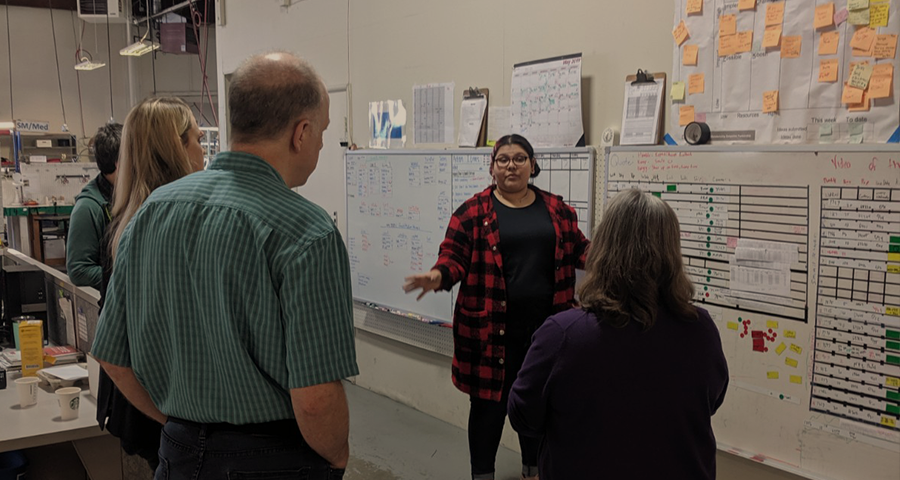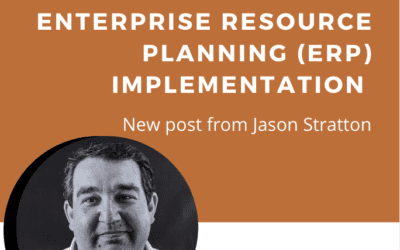During my time as a consultant at OMEP, I partnered with many successful manufacturers over the years. While their products and industry sectors varied, the determination shown by each business leader to continually improve required the same level of dedication and commitment. Manufacturing is a challenging industry, but these men and women continue to innovate, embrace change, and empower their employees to solve problems. Today, as OMEP’s president, I support our team of consultants as they continue to deliver on OMEP’s mission: working side by side with manufacturers to help build successful businesses.
The challenges and successes experienced in my work with manufacturers taught me several valuable lessons. As any manufacturer will tell you, maintaining the successes of a lean transformation is difficult.
Mindset Makes all the Difference
The following statement is overused for a reason:
The most critical aspect of a successful lean transformation is mindset.
The key difference between success and failure in a manufacturing facility can be boiled down to a simple set of facts: if leadership views the lean methodology as an operational philosophy, you will succeed. If leaders view lean as a program to achieve a set of targets, it will not last.
Can you achieve results quickly by running a kaizen or lean improvement project? Absolutely. But those results won’t last unless the mindset (lean as an operational philosophy) is in place and long term perspective established.
The Challenges of Today Are not the Challenges of Tomorrow
Great companies are set apart by their innovative strategies. Manufacturers often consider innovation to be a new product idea, but I propose that innovation can simply mean making adjustments based on new information. It’s difficult to do. Staying rooted in our existing and proven models feels much more natural for human beings.
Many times companies believe that once they have “leaned out an area” they are done and simply left with the challenge of maintaining consistency over time. This is a key mistake where the goal is to ensure we continue doing things the exact same way.
While striving for standard process is a foundational philosophy in lean, expecting all variables to never change is completely unrealistic. There are just too many elements outside of your control. Problems manifest themselves differently every day, the goal should be possessing the capability to easily recognize the new variation and adjust to the new need.
Change is Inevitable – Proven Strategies Require Thoughtful Practice
Manufacturing today is not the same as it was in the past. It is a very complex ever-changing ecosystem of materials, machines, methods, people, economies, logistics and cultures. Globalization exponentially complicates this on a daily basis. We look to control variables to sustain gains but when there are myriad of elements that we don’t control, we must approach change as a regular ongoing way of doing business.
Today’s manufacturers need to be prepared to react to changes quickly while predicting and adjusting for challenges of the future. The good news is despite constant change, lean methodologies, thought processes, and strategies remain consistently effective in addressing the needs.
Any current state will become obsolete and evolution takes effort. The last time I checked most of us don’t have endless capacity for continuous improvement activities. This is a real challenge to balance against the regular everyday pressures of getting products to our customers. Because of this, it is essential to develop systems that help you understand how to prioritize your improvement efforts. There are big problems and small ones, depending on the person you ask perceptions could be the opposite.
Understanding the causal factors and severity of impact on performance is critical to generate buy-in and confidence in expending precious resources on what is really essential at that time.
Total Buy-in Not Optional
A company’s percentage of effectiveness is directly tied to how effectively their strategies and initiatives are communicated through the organization. Companies must develop methodologies to clearly connect how work at every level directly impacts top level goals. This cascading connection of understanding will align people to the right activities and generate understanding of individual contributions. In this people will inherently want to work on improvement in the right areas and care about the results. As the world shifts and company goals shifts it becomes a natural occurrence for the work (and problem solving) to shift.
In short, successful lean improvements come down to mindset and perspective. If you have a truly-long term continuous improvement mindset, and are building that vision into the DNA of your organization, you will gain traction. Don’t set yourself up for disappointment by targeting “sustaining lean gains” rather ask yourself, ‘are we instilling capabilities in the workforce and setting expectations to constantly evolve?’
Once a company moves from the concept of lean as a program, to lean as a proven set of problem-solving methodologies – Our way of doing business – there will no longer be a need to “sustain the gains”, as “gains” become a part of your everyday work.




